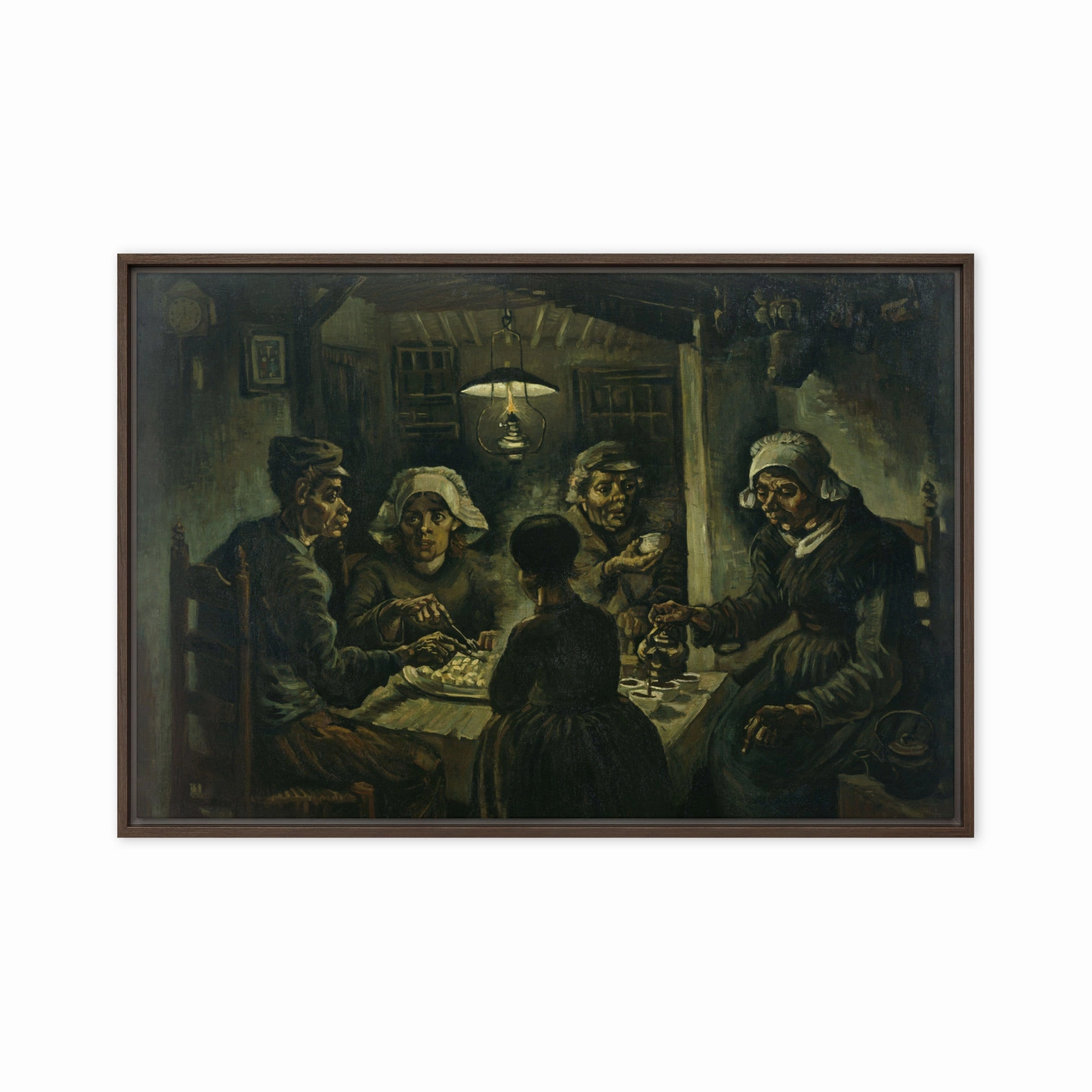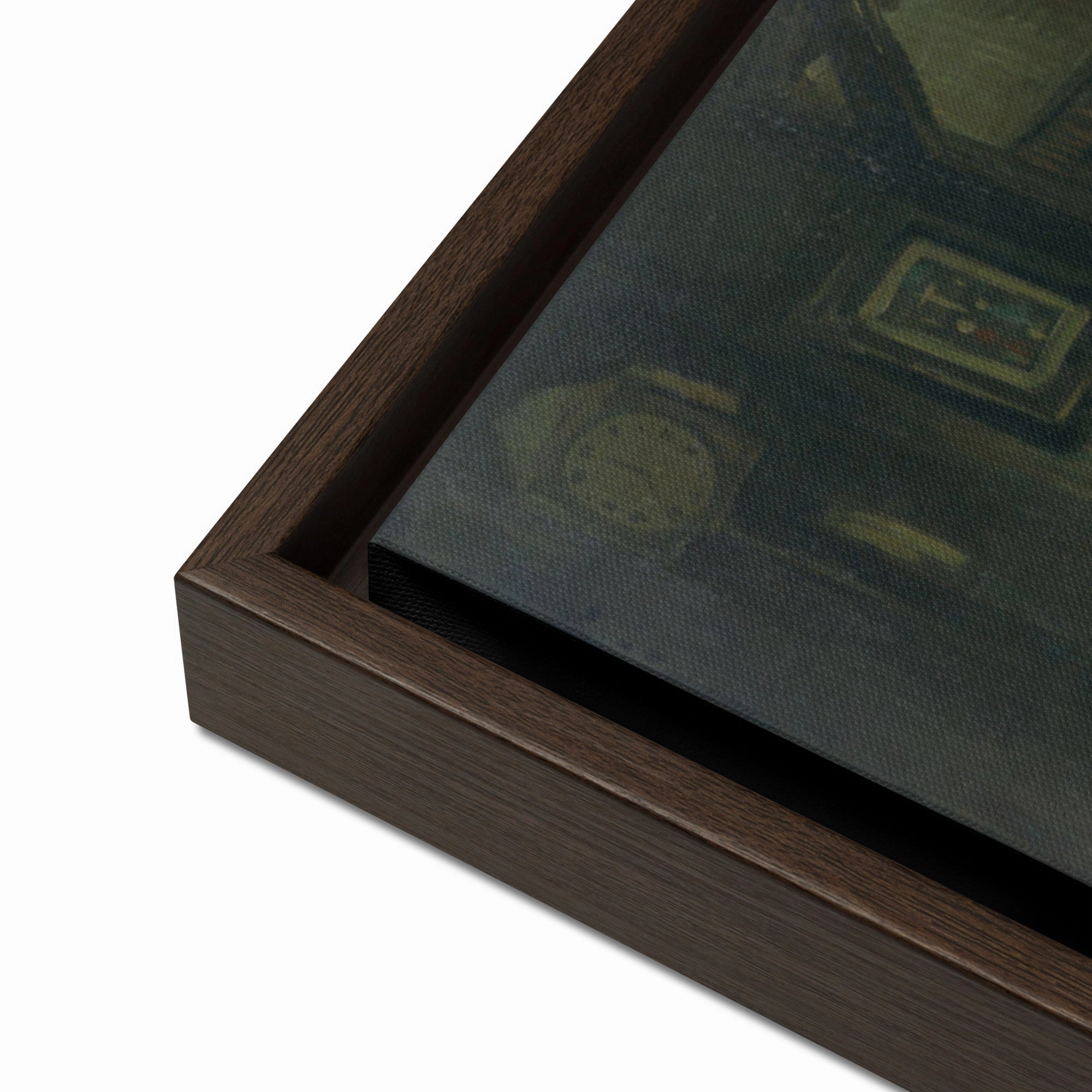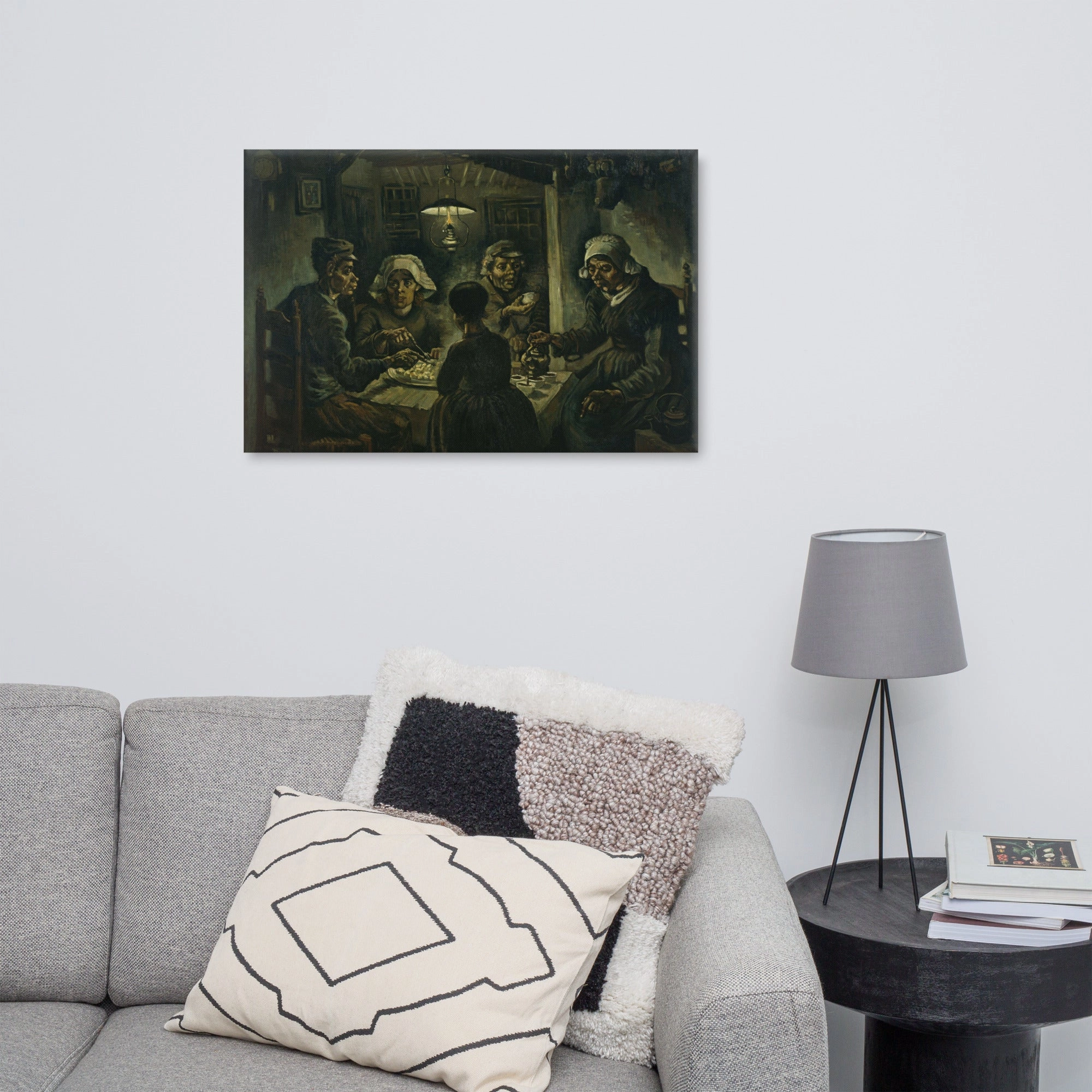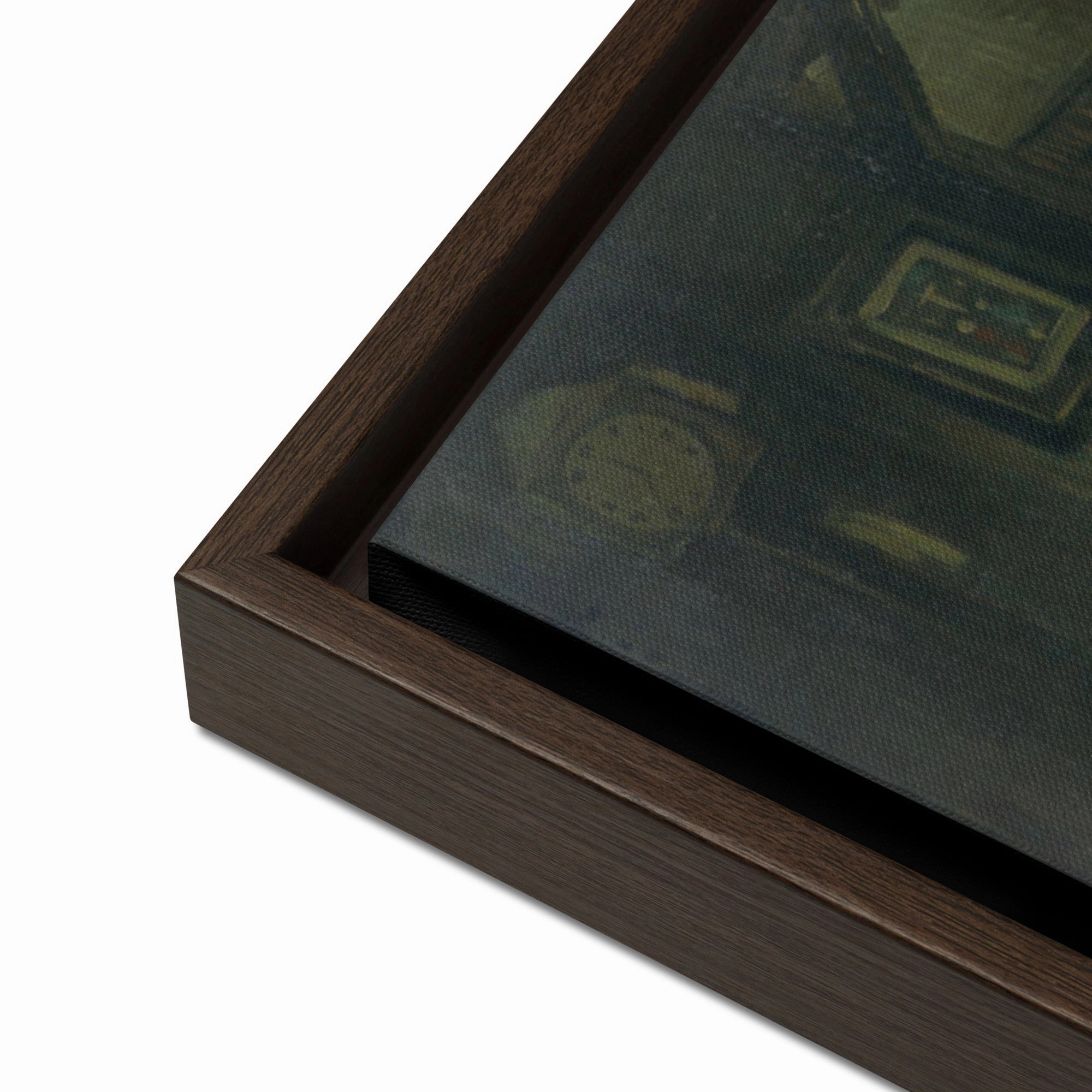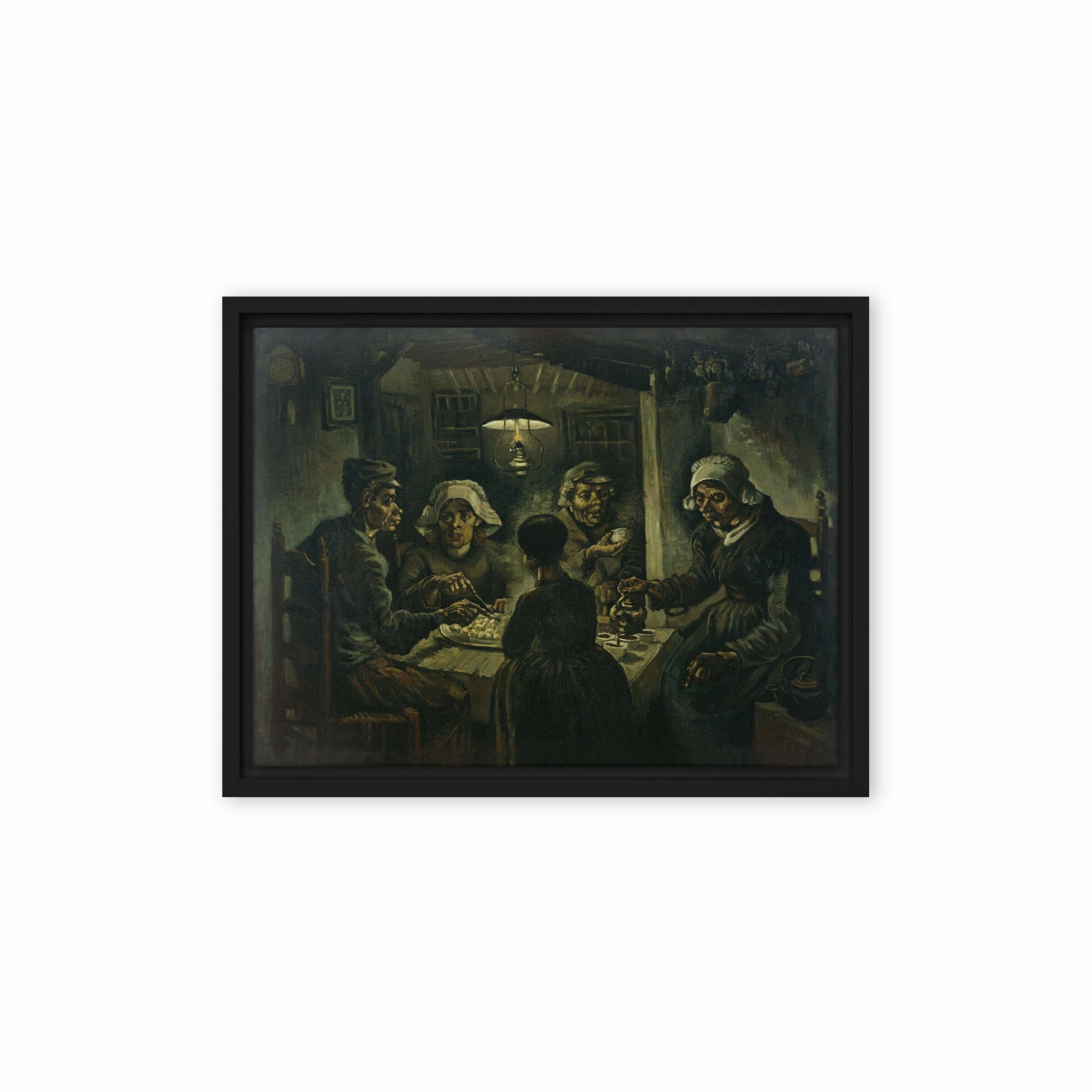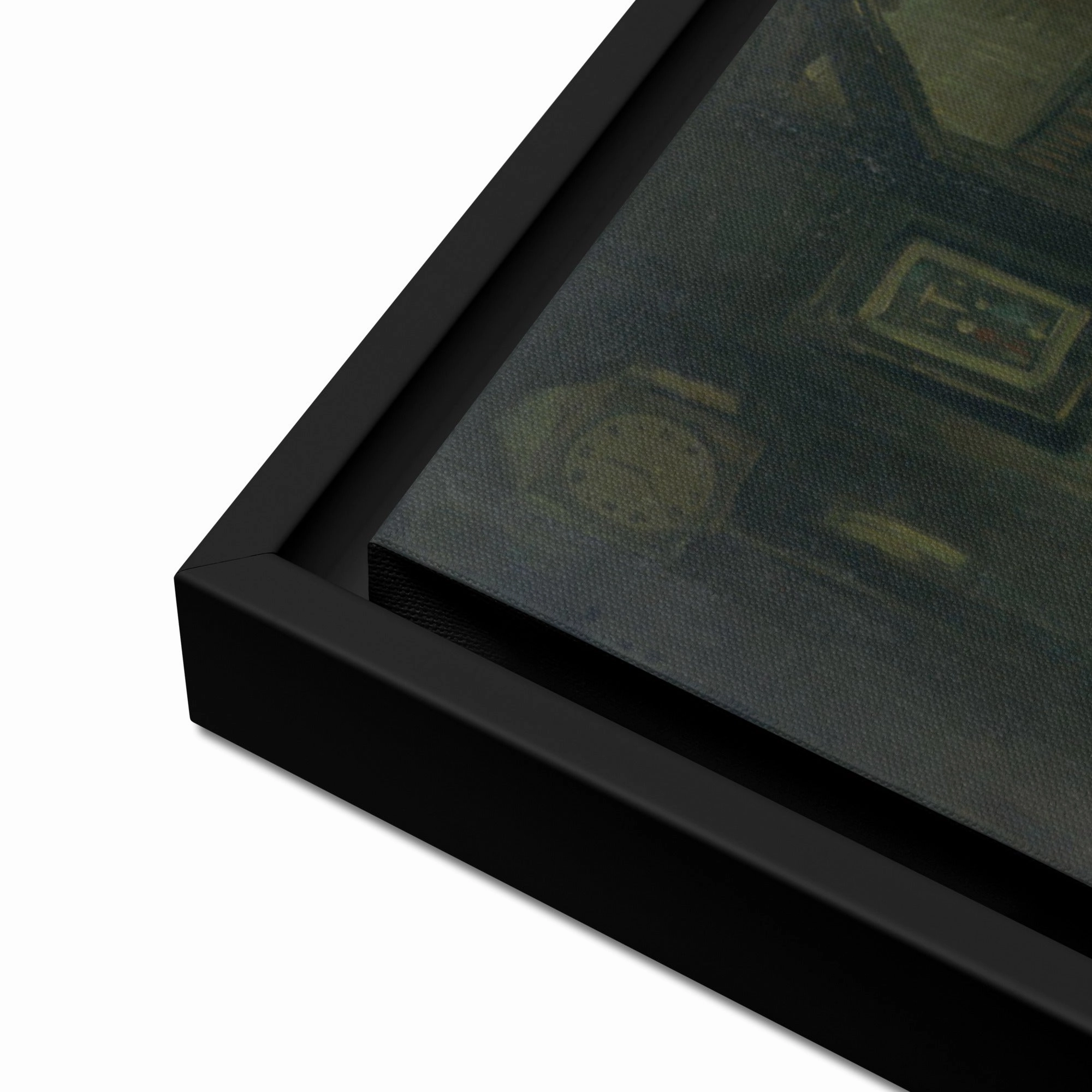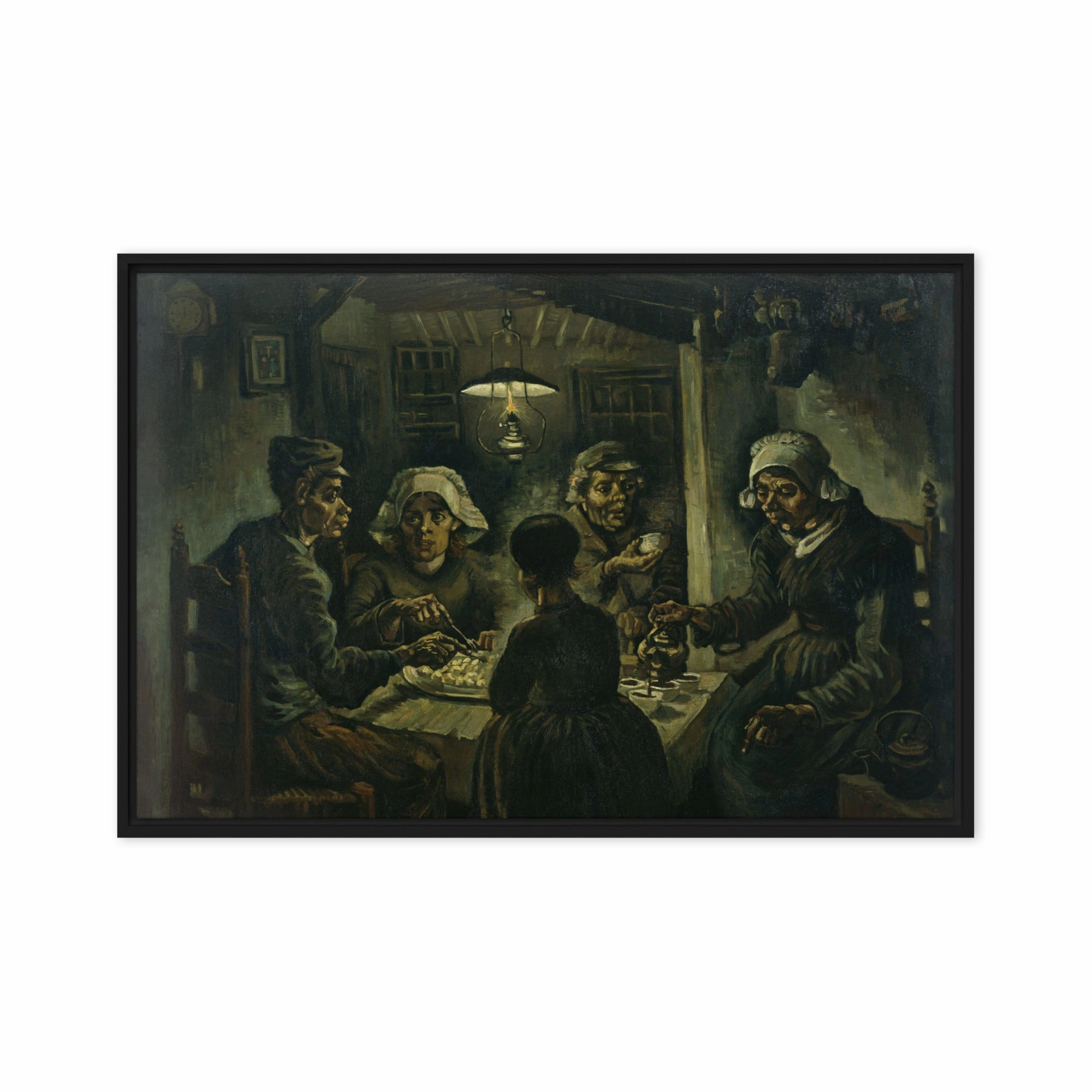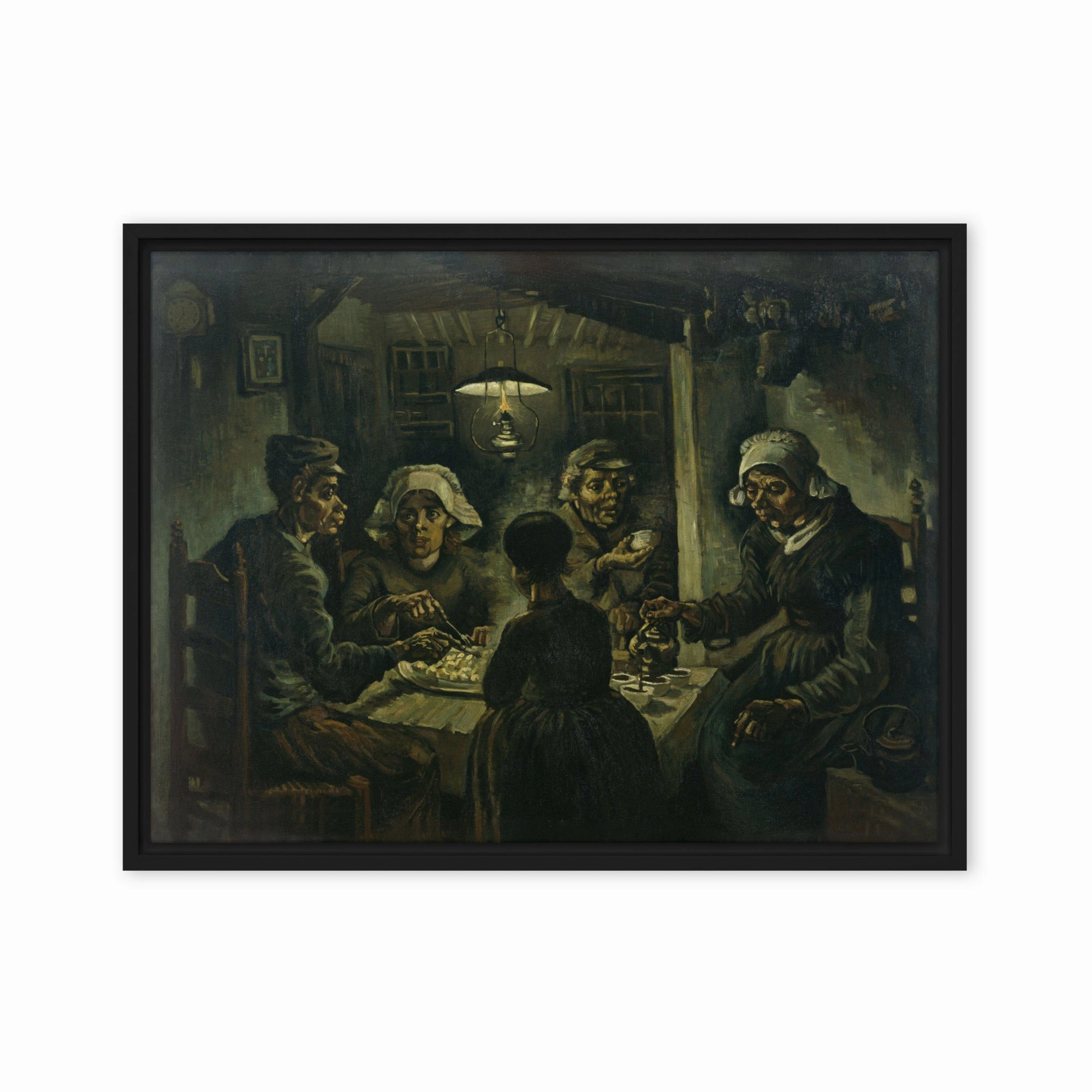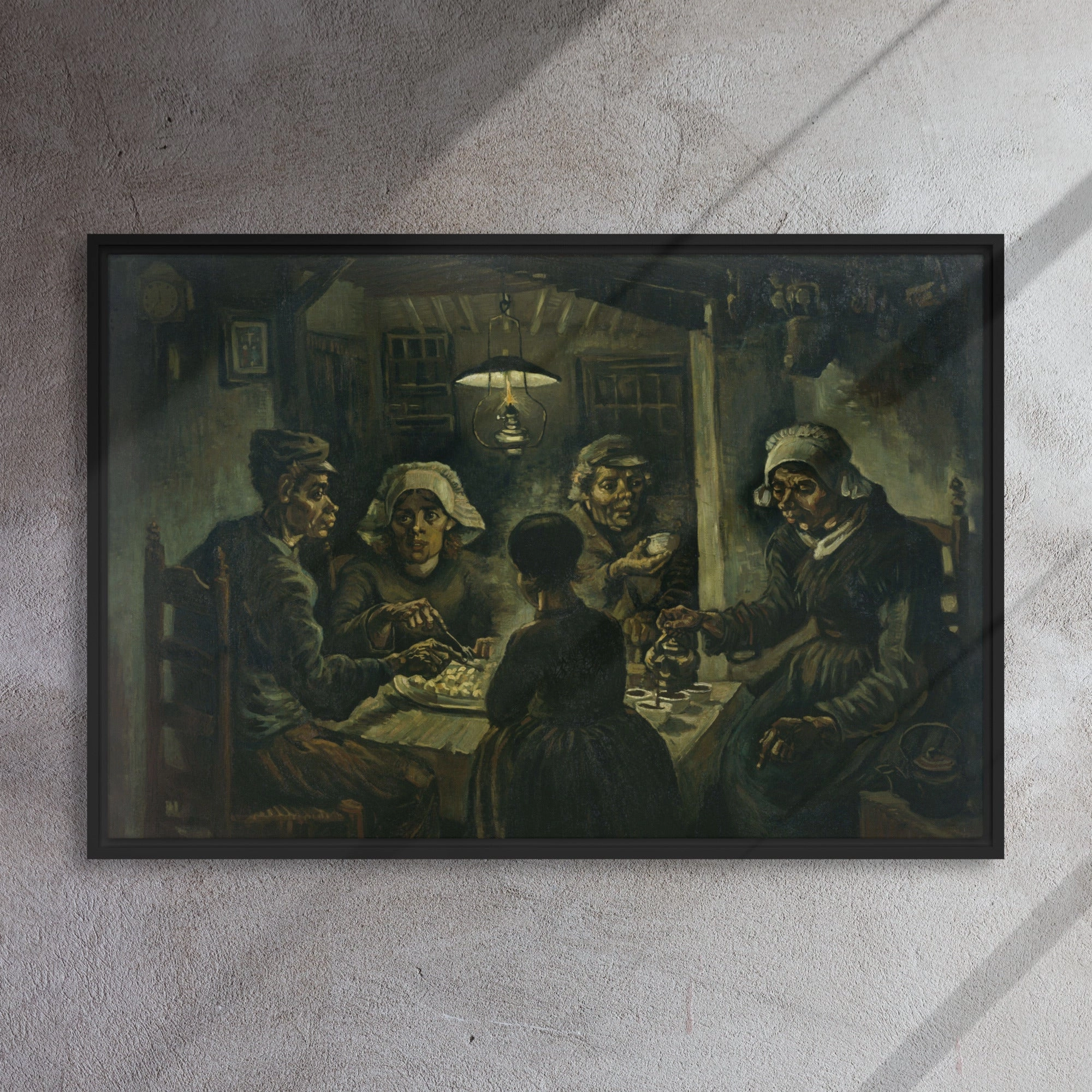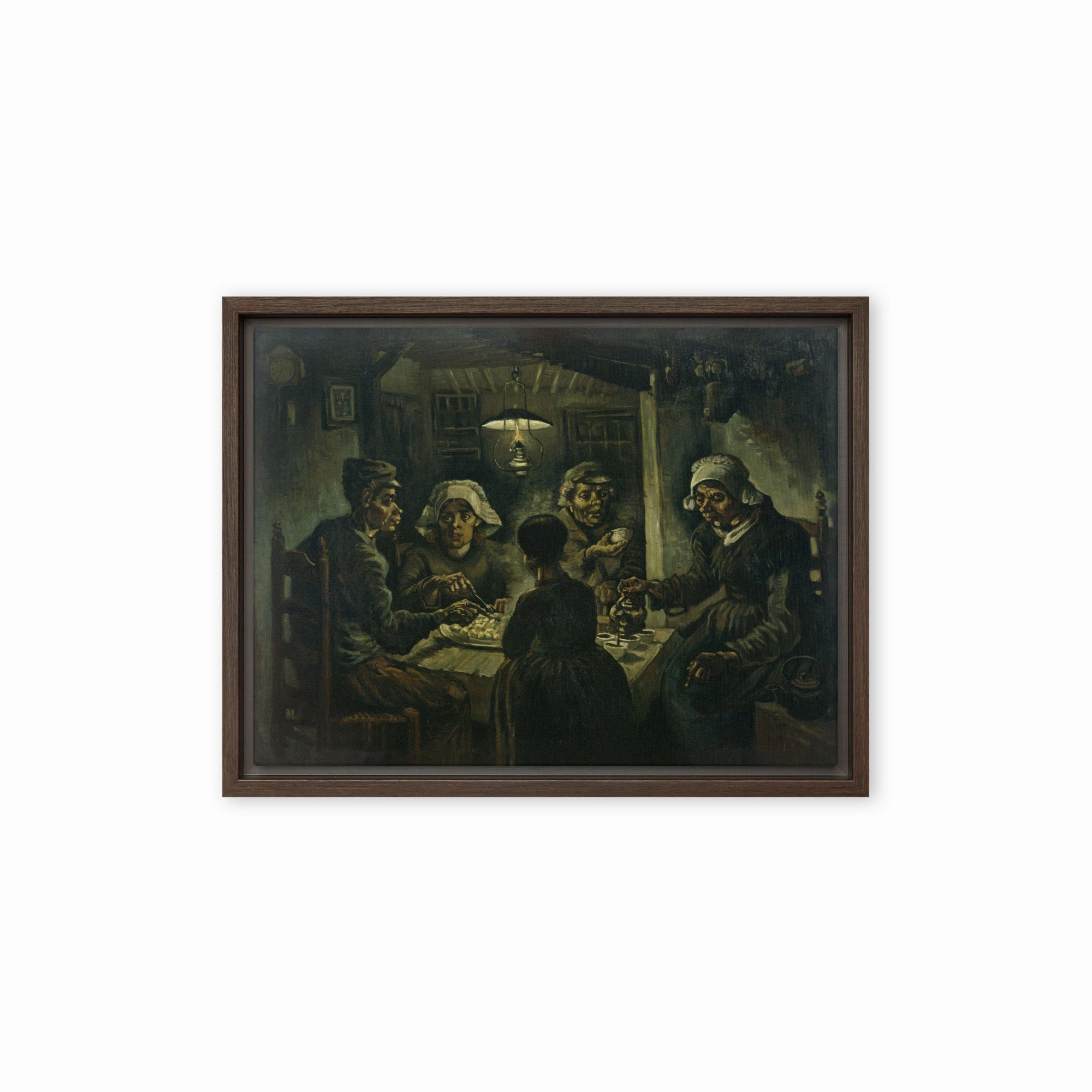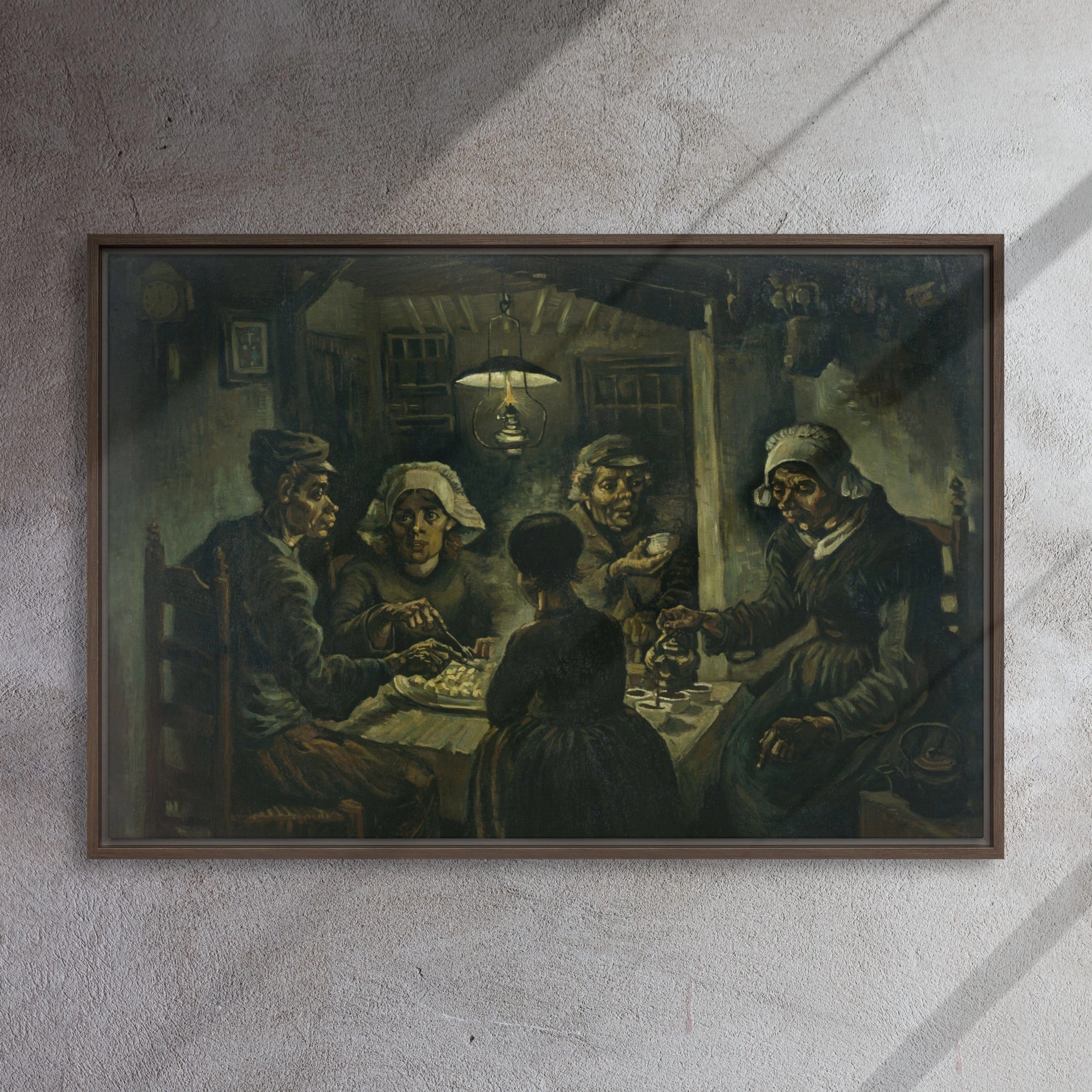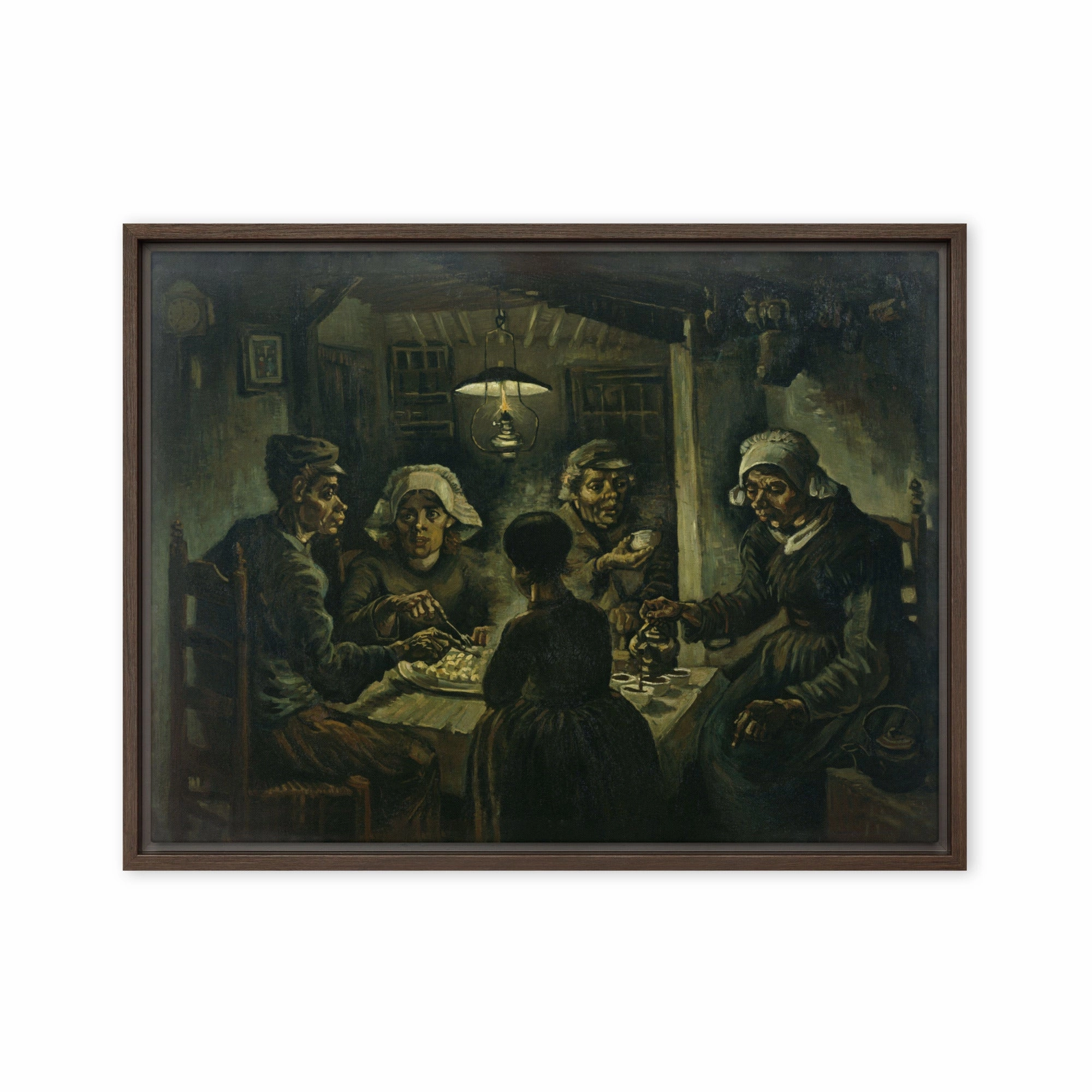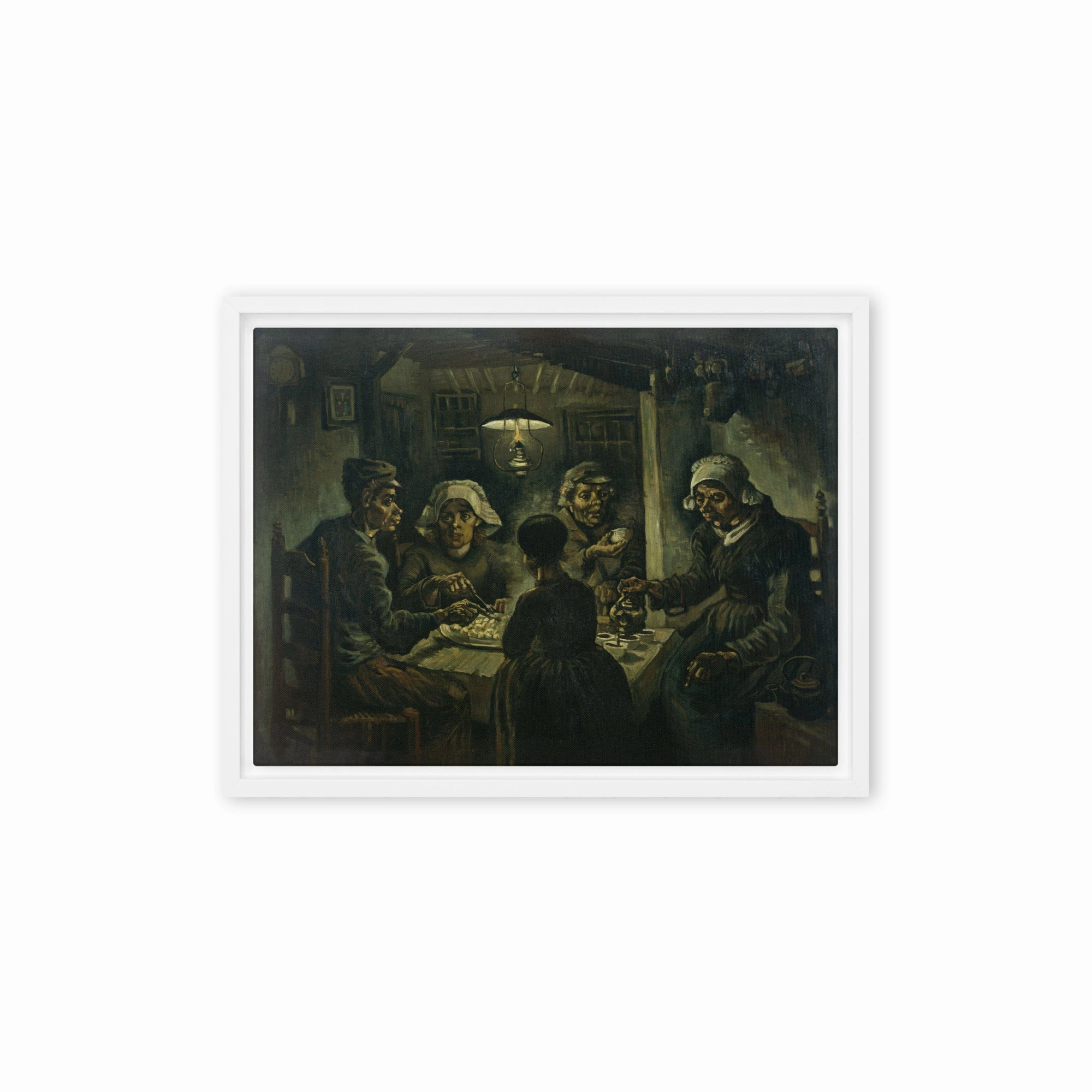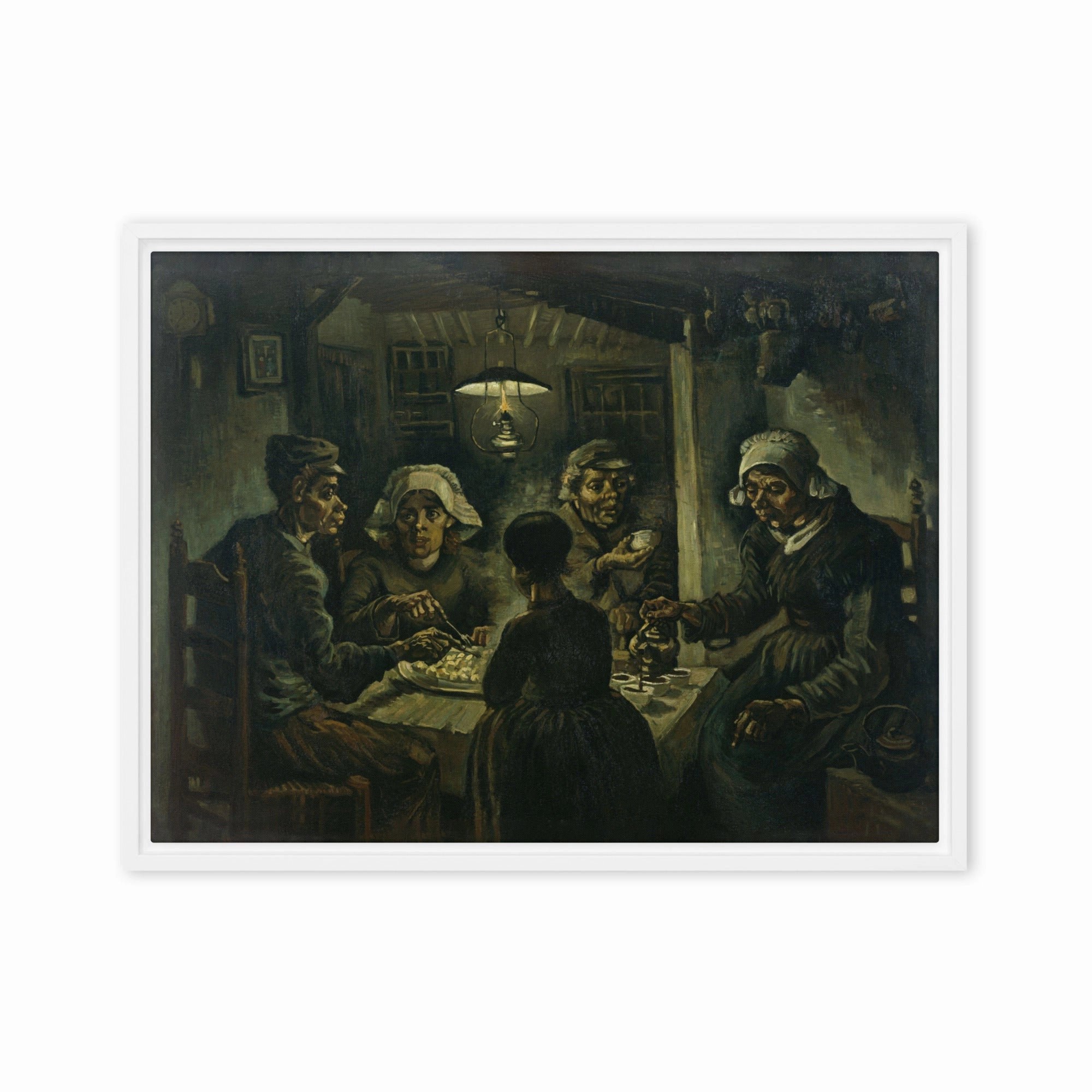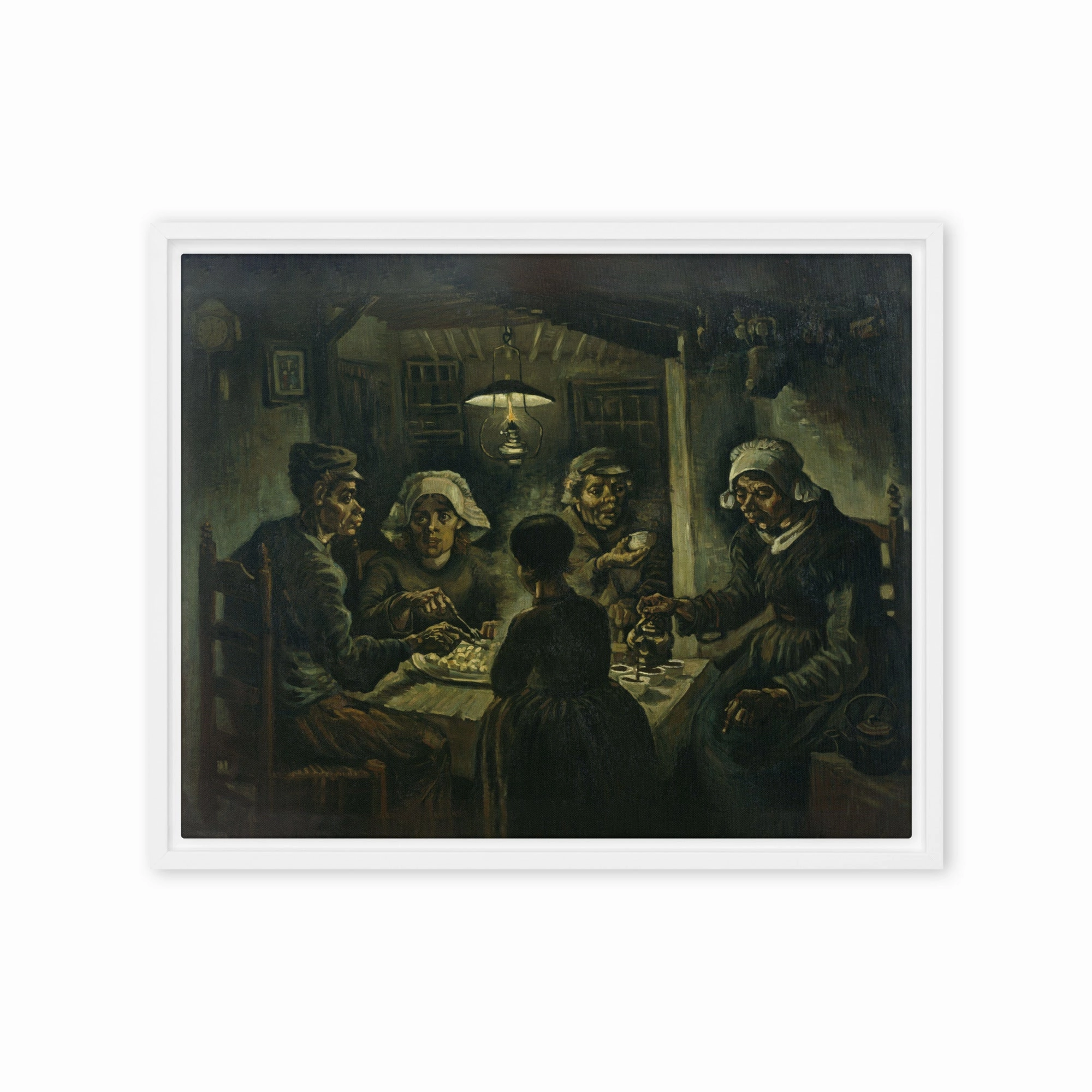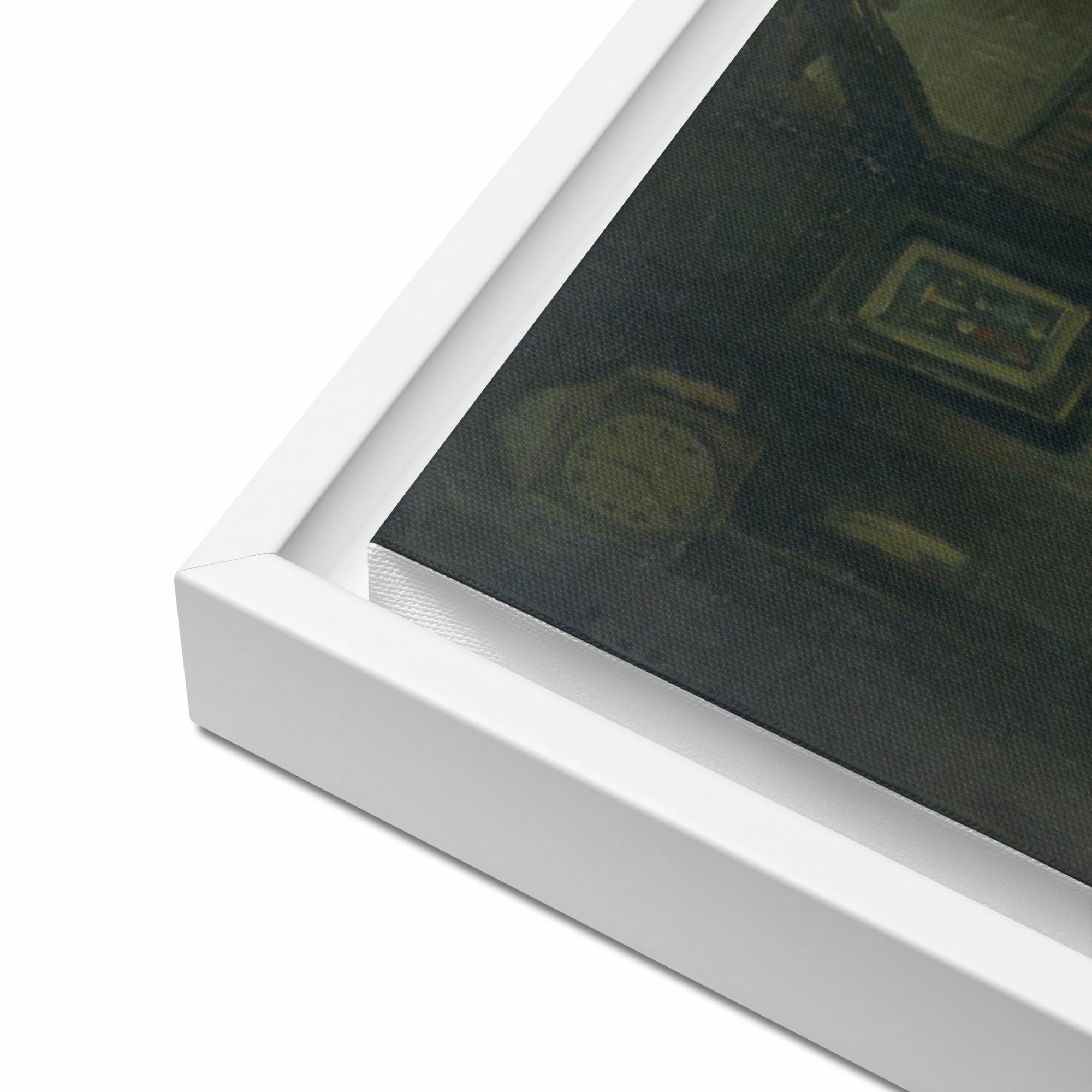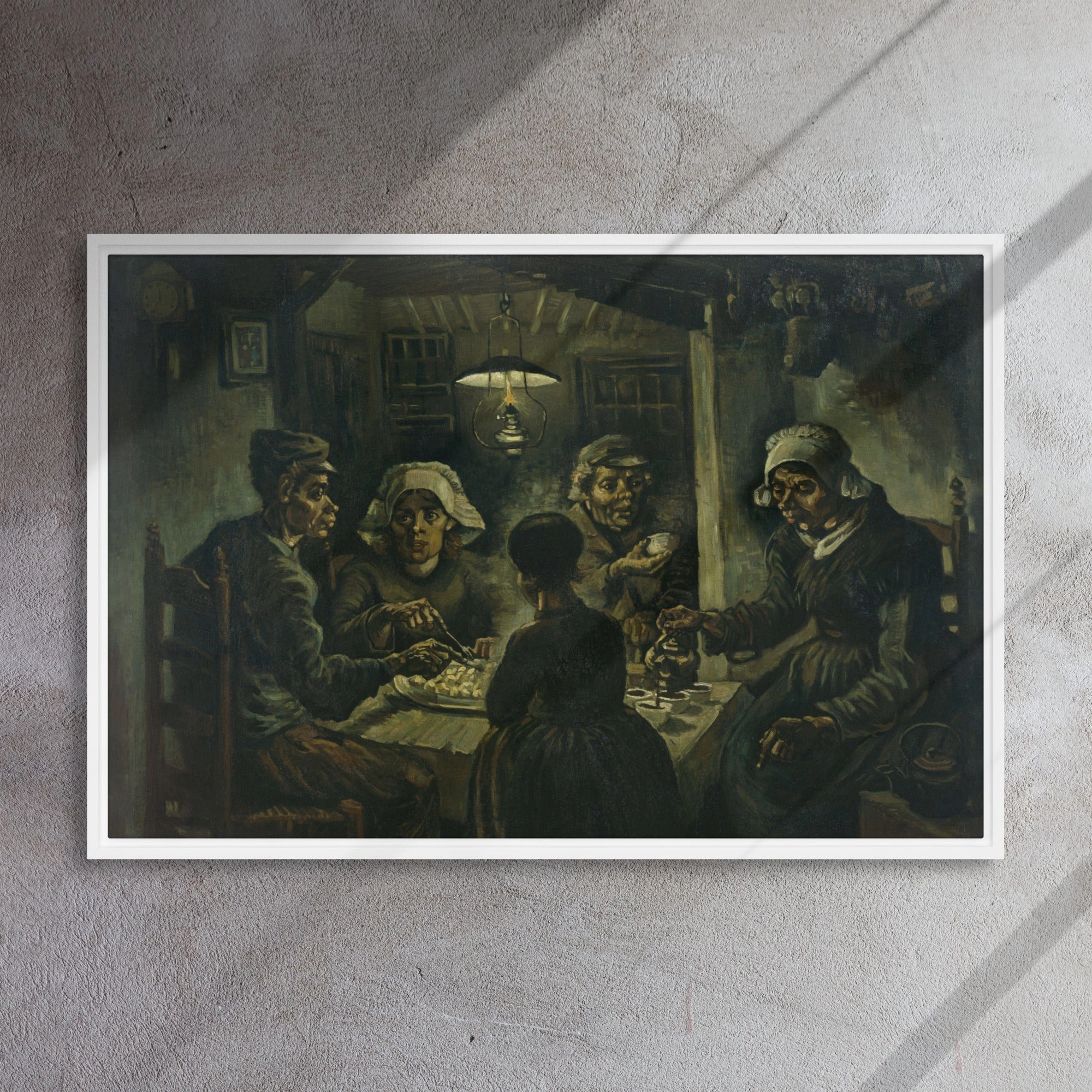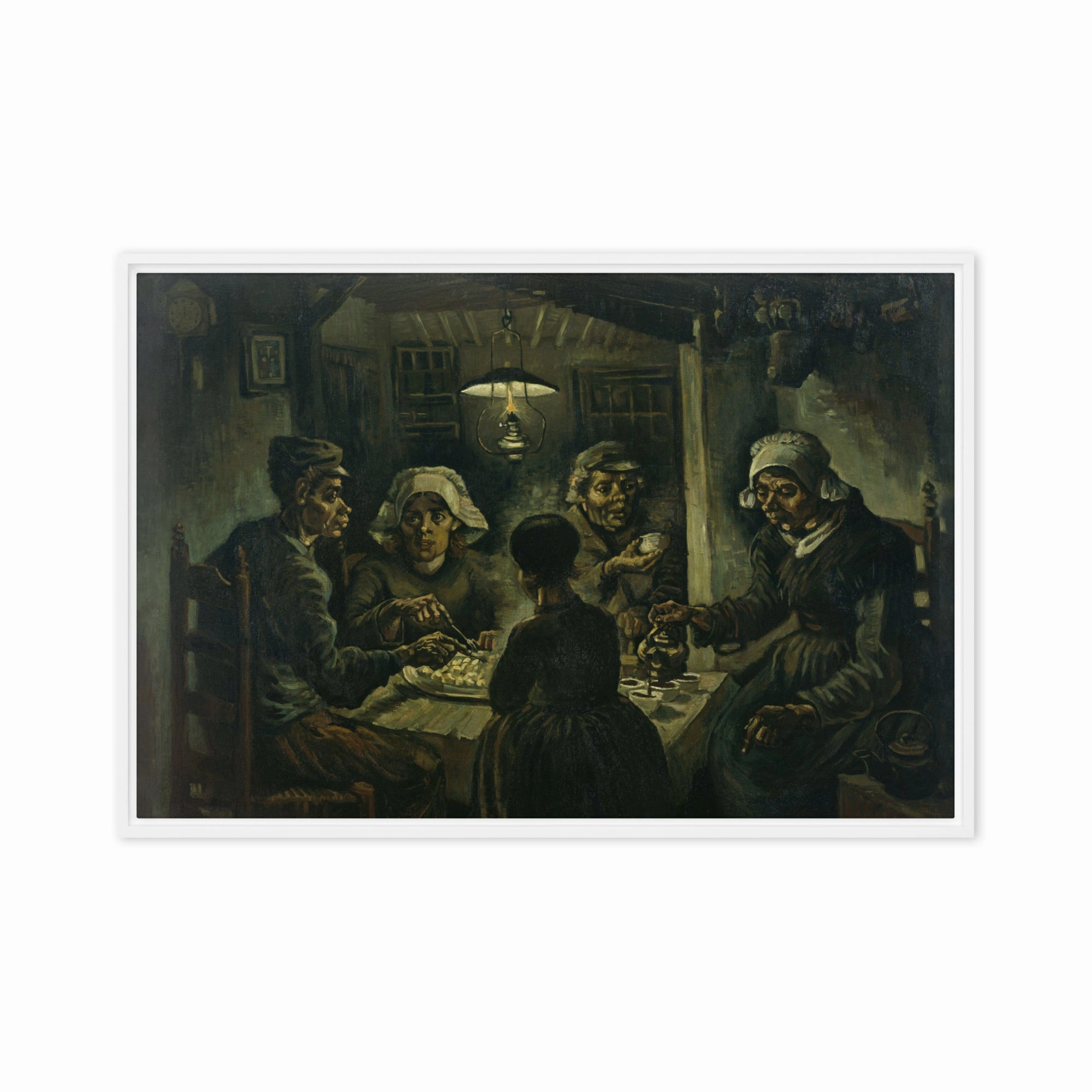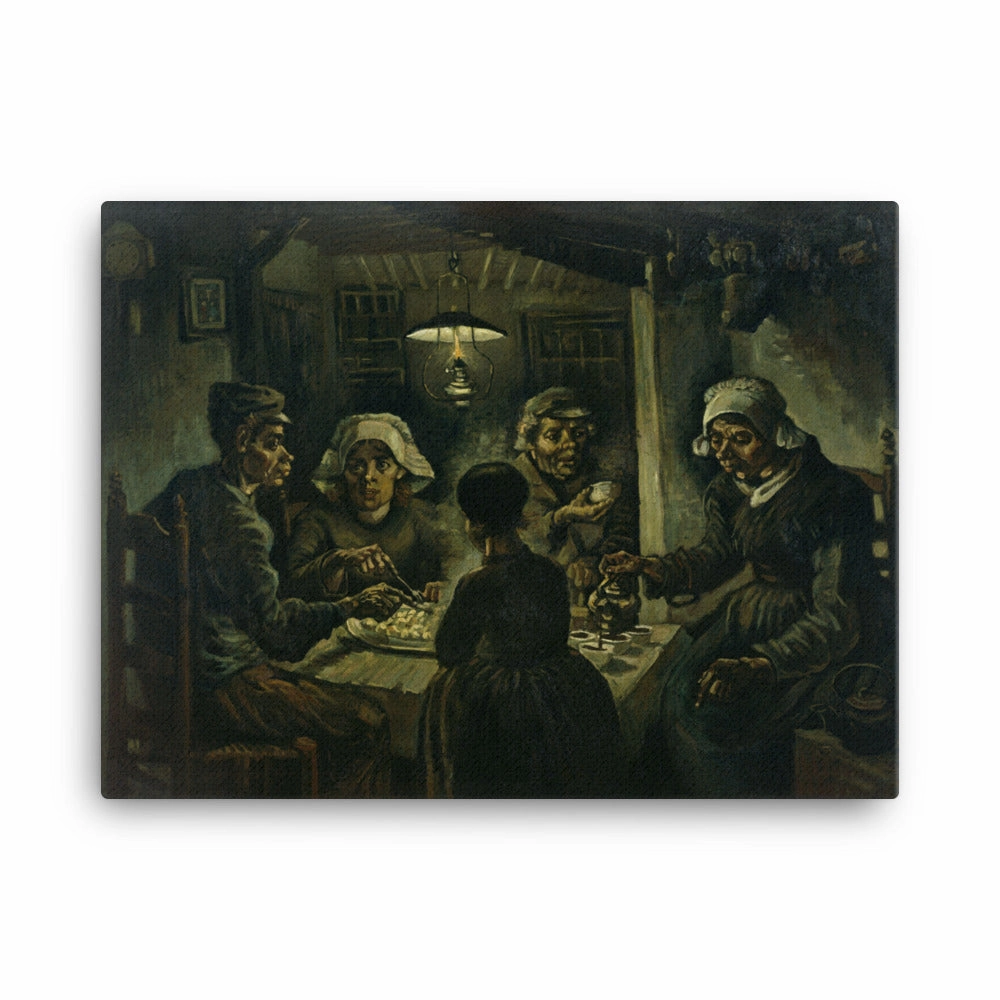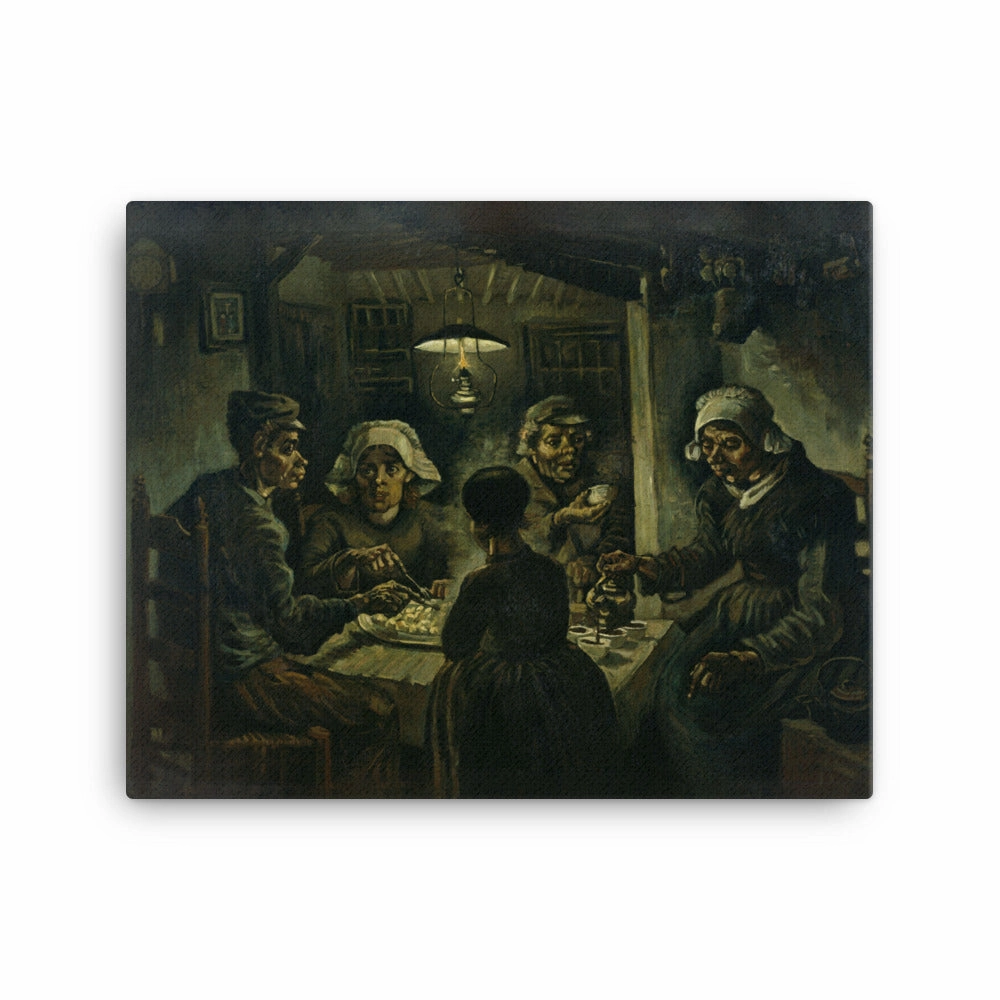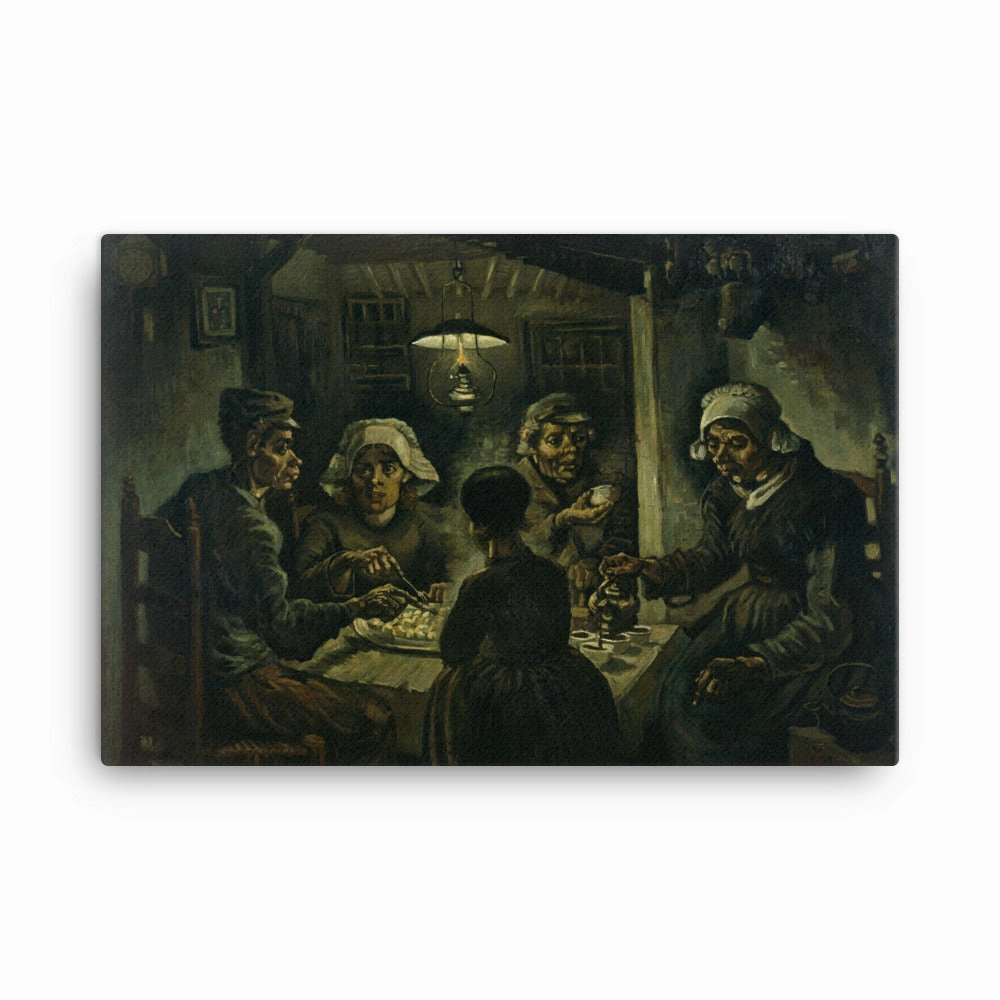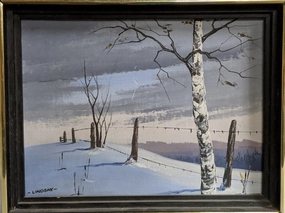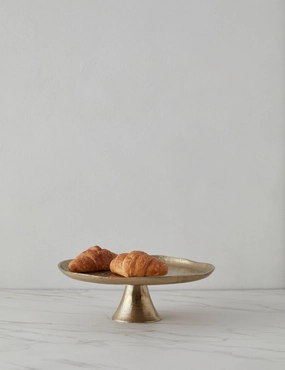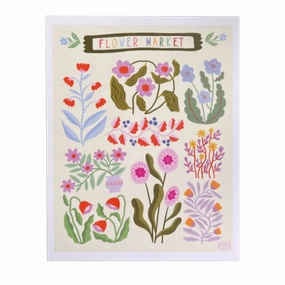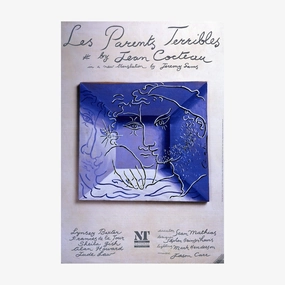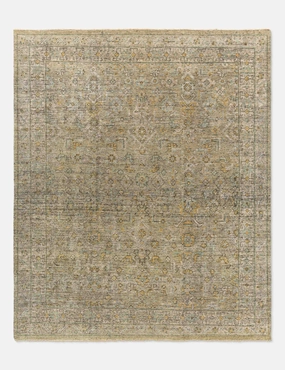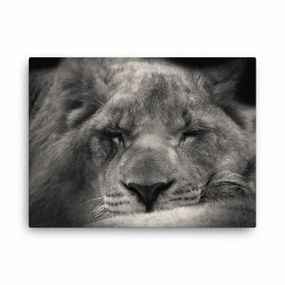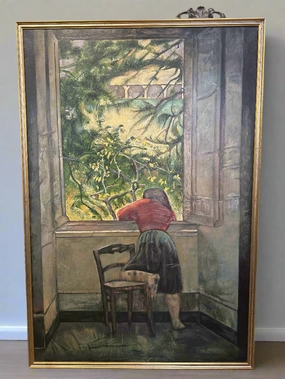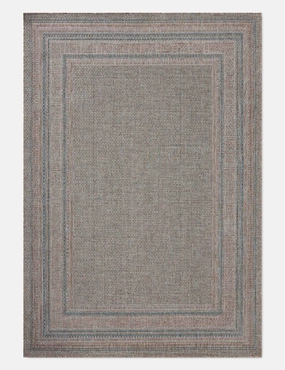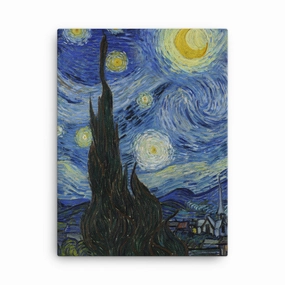Potato eater 1885, canvas with frame
Brighten up your white walls with this show-stopping framed canvas! This high quality pine canvas has rubber pads on the back corners. The wall mount is already attached so the artwork can be hung in no time. In addition, the frame gives the canvas a cool, floating effect!
Frame made of pine
Frame thickness: 3.18 cm (1.25)
Canvas fabric weight: 344 g/m /- 25g/m (10.15 /- 0.74 oz/yd)
Open back
Rubber pads on rear corners
Hanging fittings already attached
Blank product from the USA
Potato eater 1885, canvas without frame
Looking for some flair for your office or home? Your search is over! This canvas print - Van Gogh, Potato Eaters 1885 with vibrant and fade-resistant colors is sure to catch the eye.
Acid-free, PH-neutral poly-cotton base
0.5mm thick poly-cotton fabric
Canvas fabric weight: 470gsm
Fade-resistant
Hand-stretched on a solid wood frame
Matte coating
3.81 cm deep
Includes mounting clips
Raw product sourced in the EU from Latvia
Raw product sourced in the USA
The Katoffelesser, 1885
It is one of his early works, completed in 1885, and is markedly different from the more famous and colorful works he is known for. "The Potato Eaters" is an expressionist work depicting a group of farmers gathered around a simple meal of potatoes.
Themes: The painting depicts five people sitting around a rustic wooden table in a poorly lit room. Four of them are farmers, and the fifth person is a woman, possibly the mother of the group. They are engaged in a simple, humble meal of potatoes, which were a staple food for many people in the countryside at the time.
Lighting and Atmosphere: The painting is characterized by a dark and gloomy atmosphere. Van Gogh used a limited color palette dominated by earthy, gloomy tones to depict the harshness and poverty of farmers' lives. The poorly lit room is illuminated by a single light source, probably an oil lamp, which casts deep shadows across the faces and surroundings, adding to the sense of realism and seriousness in the scene.
Representations of the figures: Van Gogh paid particular attention to the details of the farmers' faces and hands. Their weathered, wrinkled and cracked skin reflects the hardships of their lives. The characters' faces are marked by hard work and poverty, and their expressions are stoic and thoughtful.
Symbolism and social criticism: "The Potato Eaters" is often seen as a commentary on the harsh living conditions and the daily struggle for survival of the rural population. Van Gogh wanted to portray the dignity and authenticity of her life in this painting. It is a departure from his later, more colorful works as it shows his interest in depicting the realities of everyday life, particularly those of the less privileged.
Influence and Style: The painting shows the influence of the dark and dramatic works of artists such as Jean-Franois Millet, whose paintings often focused on rural life and the hardships of rural people. Van Gogh's own evolving style is evident in the painting's powerful, heavy brushwork and rough, textured surface.
"The Potato Eaters" is of great importance in Van Gogh's work as it marks an important early phase in his artistic development. It shows his deep empathy for the working class and his desire to portray human existence in all its complexity. This painting differs greatly from his later works, which are characterized by brighter colors and a more expressive, post-impressionist style.
Blog article: About life and artistic legacy

 Cart(
Cart(